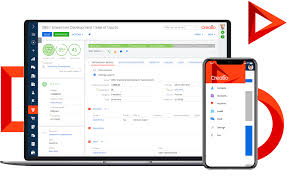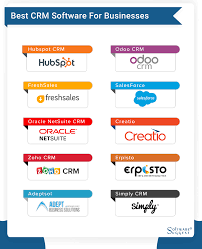Enhancing Customer Relationships Through CRM Strategies
The Importance of CRM for Building Strong Customer Relationships
Customer Relationship Management (CRM) is a vital tool for businesses looking to enhance their interactions with customers and build long-lasting relationships. In today’s competitive market, where customer loyalty is paramount, implementing an effective CRM system can make all the difference.
CRM software allows businesses to centralise customer data, track interactions, and provide personalised experiences. By having a comprehensive view of each customer’s history, preferences, and feedback, companies can tailor their marketing efforts and services to meet individual needs.
One of the key benefits of CRM is improved communication. With a CRM system in place, all departments within a company have access to the same customer information. This enables seamless collaboration and ensures that every interaction with a customer is consistent and informed.
Furthermore, CRM helps businesses identify opportunities for upselling and cross-selling by analysing customer behaviour and purchasing patterns. By understanding their customers better, companies can offer targeted promotions and recommendations that resonate with individual preferences.
Another advantage of CRM is its ability to enhance customer service. With quick access to relevant customer data, representatives can address queries promptly and effectively. This leads to higher satisfaction levels and fosters trust between the business and its customers.
Moreover, CRM systems provide valuable insights through analytics and reporting features. By analysing data on customer interactions, sales trends, and marketing campaigns, businesses can make informed decisions that drive growth and profitability.
In conclusion, investing in a robust CRM system is essential for businesses that aim to cultivate strong relationships with their customers. By leveraging CRM software effectively, companies can streamline operations, boost sales, improve customer satisfaction, and ultimately foster loyalty that lasts a lifetime.
Understanding CRM: Key Questions and Answers for Customers and Users
- What CRM means?
- Is CRM a customer service?
- What is CRM customer data?
- Is customer service a CRM?
- What is a customer in CRM?
- What is CRM with example?
- What is CRM full form?
- What is CRM customer?
- What are CRM users?
What CRM means?
Customer Relationship Management (CRM) refers to a strategic approach that businesses adopt to manage interactions with current and potential customers. CRM encompasses a set of practices, technologies, and strategies aimed at nurturing customer relationships, enhancing customer satisfaction, and driving business growth. By centralising customer data, tracking customer interactions, and analysing customer behaviour, CRM enables companies to better understand their customers’ needs and preferences. Ultimately, CRM empowers businesses to deliver personalised experiences, improve communication across departments, and maximise customer lifetime value.
Is CRM a customer service?
Customer Relationship Management (CRM) is not synonymous with customer service, but rather, it encompasses a broader scope of activities aimed at managing and improving relationships with customers. While customer service is a crucial component of CRM, involving aspects such as addressing queries, resolving issues, and providing support, CRM goes beyond these functions to include strategies for acquiring, retaining, and nurturing customer relationships. CRM involves the use of technology and processes to gather and analyse customer data, personalise interactions, and enhance overall customer experience across various touchpoints. Ultimately, CRM serves as a comprehensive approach to understanding and engaging with customers throughout their journey with a business.
What is CRM customer data?
CRM customer data refers to the information and insights gathered about individual customers and their interactions with a business. This data typically includes details such as contact information, purchase history, preferences, feedback, and communication records. By centralising and analysing CRM customer data, businesses can gain a comprehensive understanding of each customer’s needs and behaviours. This knowledge enables companies to personalise their marketing strategies, improve customer service, identify sales opportunities, and ultimately build stronger relationships with their customers. In essence, CRM customer data is a valuable asset that empowers businesses to enhance their interactions and provide tailored experiences that resonate with individual preferences.
Is customer service a CRM?
Customer service is an integral component of Customer Relationship Management (CRM) but is not synonymous with it. While customer service focuses on addressing and resolving customer inquiries, issues, and complaints, CRM encompasses a broader set of strategies and technologies aimed at managing and nurturing customer relationships. CRM involves capturing, analysing, and leveraging customer data to tailor interactions, improve communication, and enhance overall customer experience. Effective customer service is a key aspect of CRM, as it plays a crucial role in maintaining positive relationships with customers and fostering loyalty over time.
What is a customer in CRM?
In the realm of Customer Relationship Management (CRM), a customer is defined as an individual or entity that engages with a business by purchasing products or services, making inquiries, providing feedback, or expressing interest in the company’s offerings. In CRM terminology, customers are at the core of all interactions and transactions, and the primary focus is on building and nurturing relationships with them to drive loyalty and satisfaction. By understanding the needs, preferences, and behaviours of customers through comprehensive data management and analysis, businesses can tailor their strategies to effectively engage with each customer on a personalised level, ultimately fostering long-term relationships and driving business growth.
What is CRM with example?
Customer Relationship Management (CRM) is a strategic approach that helps businesses manage their interactions with customers and prospects effectively. It involves using technology to organise, automate, and synchronise sales, marketing, customer service, and technical support. An example of CRM in action is a company implementing a CRM system to track customer interactions across various touchpoints such as email, phone calls, social media, and in-person meetings. By centralising customer data and communication history, the company can provide personalised services, targeted marketing campaigns, and timely follow-ups to enhance customer satisfaction and loyalty.
What is CRM full form?
CRM stands for Customer Relationship Management. It is a strategic approach that businesses use to manage interactions and relationships with both current and potential customers. CRM systems are designed to streamline processes, improve customer service, and increase sales by centralising customer data and facilitating personalised communication. By implementing CRM solutions, companies can enhance customer satisfaction, build loyalty, and ultimately drive business growth through effective relationship management.
What is CRM customer?
CRM customer refers to the concept of Customer Relationship Management (CRM) from the perspective of the customer. In essence, CRM customer focuses on building and maintaining strong relationships with customers by understanding their needs, preferences, and behaviours. It involves using data and technology to create personalised interactions that enhance customer satisfaction and loyalty. By implementing CRM strategies, businesses can effectively manage their interactions with customers at every touchpoint, ultimately leading to improved customer retention and long-term success.
What are CRM users?
CRM users are individuals within an organisation who utilise Customer Relationship Management (CRM) software to manage interactions with customers effectively. These users can include sales representatives, marketing professionals, customer service agents, and management personnel. CRM users leverage the system to access customer data, track communication history, set reminders for follow-ups, and generate reports for analysis. By utilising CRM tools, users can streamline processes, improve customer engagement, and ultimately drive business growth by fostering stronger relationships with clients.








